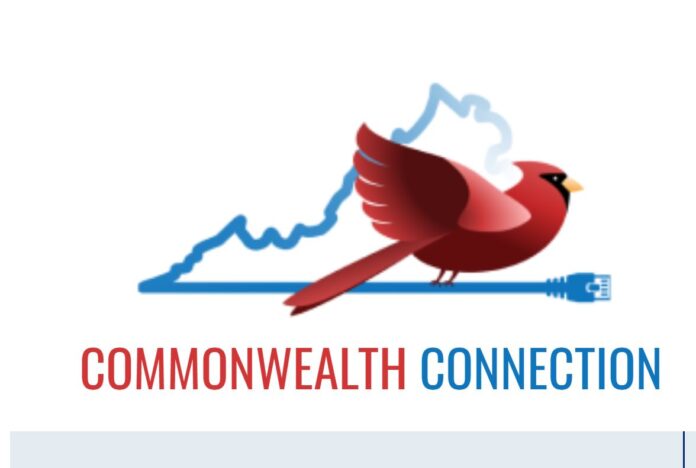When the world shut down at the start of the pandemic, how did you stay connected with family and friends? Do your job? Go to school? Obtain medical care? Mostly likely, it was online.
Now imagine trying to do all these things without reliable home internet service.
Virginia Tech’s Center for Geospatial Information Technology (CGIT), working in tandem with the Virginia Department of Housing and Community Development’s Office of Broadband, has developed and launched an enhanced mapping tool to narrow the digital divide across the commonwealth.

The Commonwealth Connection mapping tool, which provides more timely and accurate information on where high-speed internet service is available in Virginia, will allow state officials as well as consumers to determine where reliable broadband access exists — and where it is lacking.
Additionally, the new tool will give local governments key data needed to request funds, deploy broadband infrastructure, and reach the more than 50,000 underserved homes, businesses, and community anchor institutions that are without a funded solution for connectivity.
CGIT, which is housed in the College of Natural Resources and Environment, developed the first and subsequent iterations of a broadband coverage map in Virginia for the Office of Broadband. The third version of the map, released in 2017, was based on data collected by the Federal Communications Commission (FCC).
In March 2020, federal legislation was signed into law that paved the way for new mapping efforts, establishing a framework to map address-level data that would achieve a greater level of detail around broadband availability. The resulting new federal maps are expected to be released in late 2022 or early 2023.
Recognizing the need for greater detail in broadband mapping, both the Virginia General Assembly and the previous administration approved funding in April 2021 for Virginia to develop its own map, modeled after the federal standards but available months before the federal maps.
Once the General Assembly passed a budget that allowed the state’s data collection efforts to begin, Tamarah Holmes, director of the Office of Broadband, sat down with CGIT Director Brandon Herndon to talk about how they could collaborate on the state’s new responsibility to update the map.
“It was a match made in heaven for the state and Virginia Tech to work together,” she said. “They [CGIT] had built and maintained the original map and had a lot of great ideas on how to improve it. When we received the funding to build a brand new map, we decided to continue that partnership with Virginia Tech because of the expertise and great research that they do.”
CGIT began work on the project in July 2021, creating guidelines for the submission of data and building a secure portal for broadband service providers in Virginia to submit data. The center then began work on the new broadband availability map, which was released in April to the public.
The new map provides coverage information on 92 percent, or 3.5 million out of 3.8 million addresses in Virginia. About 84 percent of the broadband service providers (51 out of 57) submitted data. Data will continue to be collected annually, providing a more accurate picture of coverage and eliminating the 14- to 18-month lag from federal collection to state access that existed previously.
“The takeaway for many Virginians is they will have access to better data that is timelier,” said Herndon. “And starting next year, Virginians will be able to participate in a challenge process on where providers say broadband coverage is available. Citizens will be able to crowdsource where coverage exists and doesn’t — regardless of what broadband service providers claim.”
When data was collected at the federal level, there was no process for an individual to challenge the FCC maps.
“With our map, Virginia Tech is providing a portal and people can challenge the service area,” Holmes said. “If there is a cluster of complaints, we can go back to the provider and tell them they are overstating their coverage on a yearly basis.”
Another advantage to the new mapping tool is that it collects data for the state at the street-address level instead of by census block, the method previously used by the federal government. The result is greater accuracy and precision for the new high-resolution maps.
Gathering data at the street address level has never been done in the commonwealth. In the past, broadband service providers could tell the FCC that an area was covered if the location could be served in a reasonable amount of time.
“So if there is a cable next to a house and the provider says they can run a line to that house, that location is counted as served,” Herndon said. “That leads to a gross overstatement of where coverage is claimed.”
“In the past, the state had alternative methods to determine where broadband coverage existed because providers gave information to the FCC and did not have to share coverage information directly with the state,” said Lonnie Hamilton ’20, broadband planner with the Department of Housing and Community Development and a graduate of CNRE’s Department of Geography as well as the College of Architecture and Urban Studies.
The original map, which relied on federal data reporting, inflated the coverage. “The FCC said if you served a single address, then the entire census block is considered served. In rural areas, census blocks can be over 500 homes, which led to a vast overstatement of actual coverage,” Hamilton said.
According to Hamilton, the granularity and detail of CGIT’s new map provides a clearer picture of broadband coverage in Virginia. “For consumers, it will allow anyone to go on the map, plug in their address, and know the service available to the community and to a specific area in the community.”
Herndon indicated that the new mapping tool could potentially attract funds and economic development for underserved regions as part of the Virginia Telecommunications Initiative. CGIT’s enhanced map will assist towns, cities, and counties in applying for additional funds to bring and expand broadband coverage.
“It is our goal to help close the digital divide,” he said. “One of the big delineators is this tool. Having a high-resolution map that shows where coverage is and isn’t gives the local jurisdictions data to prove their need.”

